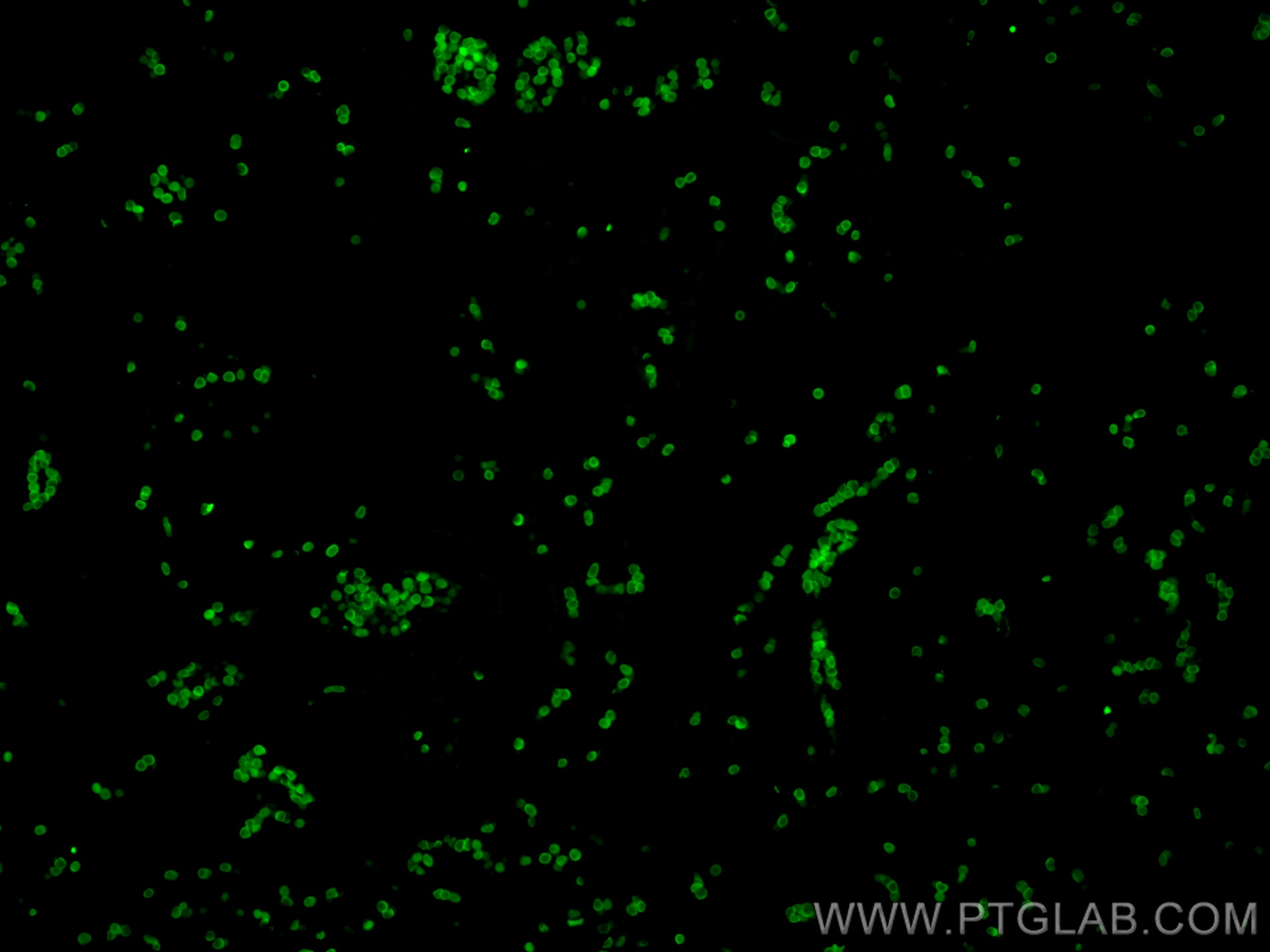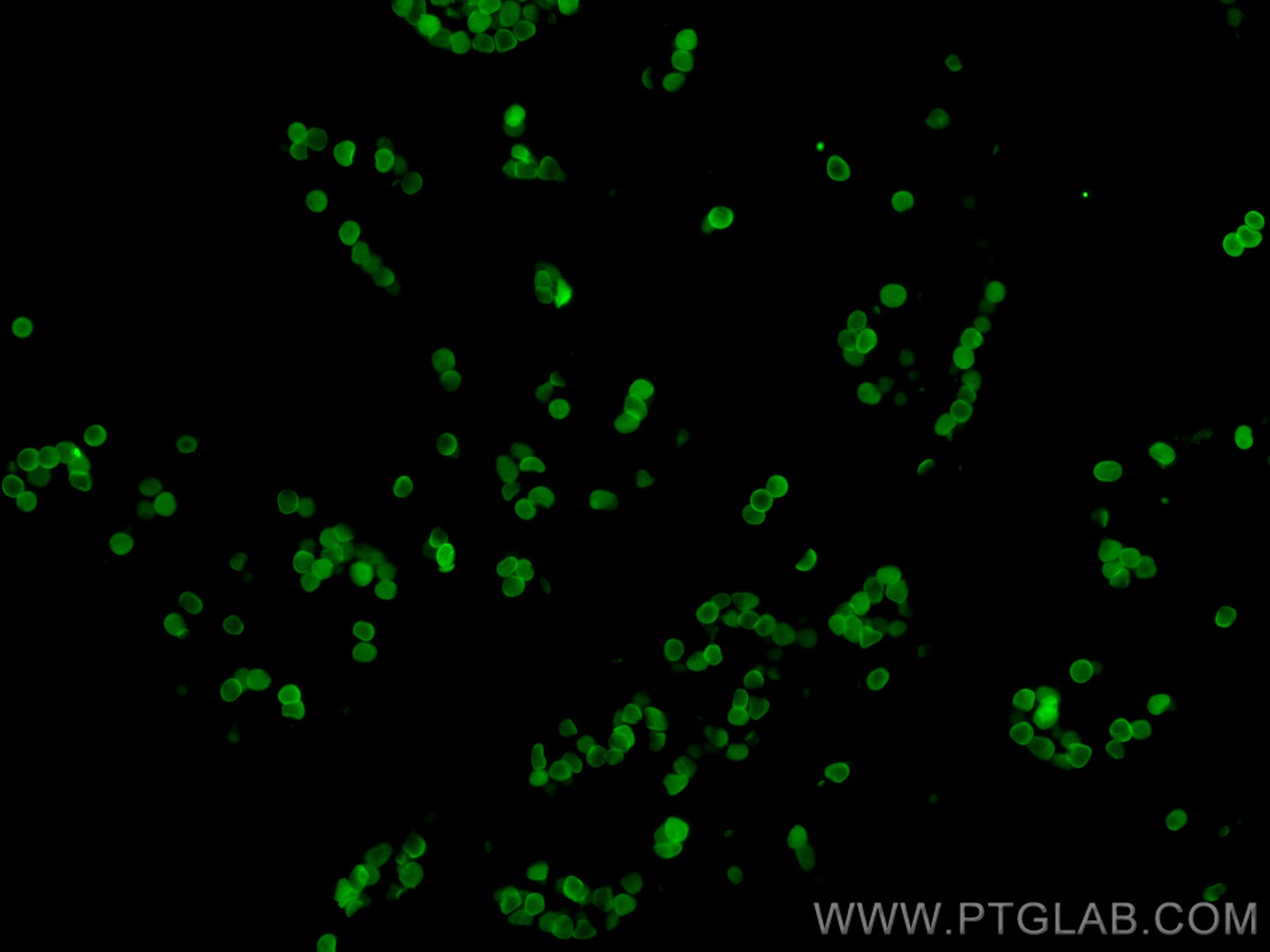Glycophorin A/CD235a Polyklonaler Antikörper
Glycophorin A/CD235a Polyklonal Antikörper für IF-P
Wirt / Isotyp
Kaninchen / IgG
Getestete Reaktivität
human
Anwendung
IF-P
Konjugation
CoraLite® Plus 488 Fluorescent Dye
Kat-Nr. : CL488-15874
Synonyme
Geprüfte Anwendungen
| Erfolgreiche Detektion in IF-P | humanes Plazenta-Gewebe |
Empfohlene Verdünnung
| Anwendung | Verdünnung |
|---|---|
| Immunfluoreszenz (IF)-P | IF-P : 1:50-1:500 |
| It is recommended that this reagent should be titrated in each testing system to obtain optimal results. | |
| Sample-dependent, check data in validation data gallery | |
Produktinformation
CL488-15874 bindet in IF-P Glycophorin A/CD235a und zeigt Reaktivität mit human
| Getestete Reaktivität | human |
| Wirt / Isotyp | Kaninchen / IgG |
| Klonalität | Polyklonal |
| Typ | Antikörper |
| Immunogen | Glycophorin A/CD235a fusion protein Ag8635 |
| Vollständiger Name | glycophorin A (MNS blood group) |
| Berechnetes Molekulargewicht | 150 aa, 16 kDa |
| Beobachtetes Molekulargewicht | 36-38 kDa |
| GenBank-Zugangsnummer | BC005319 |
| Gene symbol | Glycophorin A |
| Gene ID (NCBI) | 2993 |
| Konjugation | CoraLite® Plus 488 Fluorescent Dye |
| Excitation/Emission maxima wavelengths | 493 nm / 522 nm |
| Form | Liquid |
| Reinigungsmethode | Antigen-Affinitätsreinigung |
| Lagerungspuffer | PBS with 50% glycerol, 0.05% Proclin300, 0.5% BSA |
| Lagerungsbedingungen | Bei -20°C lagern. Vor Licht schützen. Nach dem Versand ein Jahr stabil. Aliquotieren ist bei -20oC Lagerung nicht notwendig. 20ul Größen enthalten 0,1% BSA. |
Hintergrundinformationen
Glycophorin A (GYPA) is the major transmembrane sialoglycoprotein in erythrocytes. It is a dimeric type I transmembrane protein carrying 15 closely clustered O-linked tetrasaccharides capped with sialic acid/N-acetylneuraminic acid (Neu5Ac). This 36 kDa protein represents the major sialoglycoprotein of the red blood cell membrane displaying about one million copies per cell. (PMID: 9490702)
Protokolle
| PRODUKTSPEZIFISCHE PROTOKOLLE | |
|---|---|
| IF protocol for CL Plus 488 Glycophorin A/CD235a antibody CL488-15874 | Protokoll herunterladen |
| STANDARD-PROTOKOLLE | |
|---|---|
| Klicken Sie hier, um unsere Standardprotokolle anzuzeigen |



